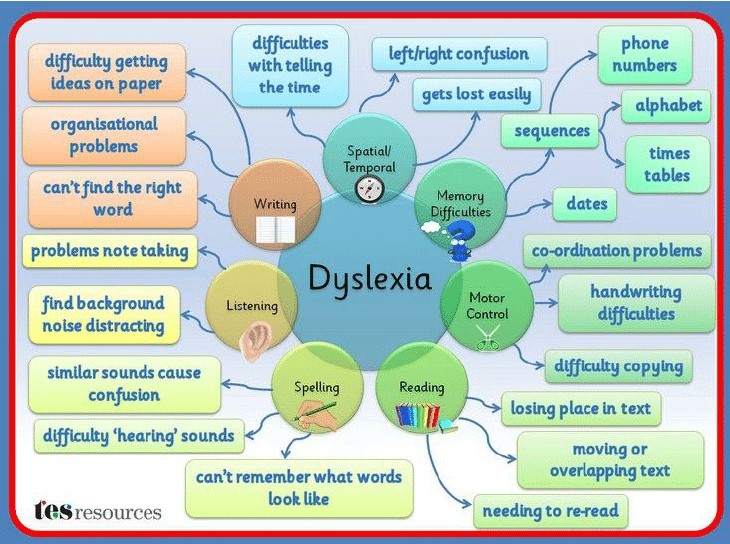Dyslexia
According to the British Dyslexia Association, ‘ten percent of the population are believed to be dyslexic, but it is still often poorly understood. With the right support, the strengths and talents of dyslexic people can really shine.’

The following definition is taken from the Rose Report 2009, which was a report to the Secretary of State for Children, Schools and Families.
Dyslexia is a learning difficulty that primarily affects the skills involved in accurate and fluent word reading and spelling.
- Characteristic features of dyslexia are difficulties in phonological awareness, verbal memory and verbal processing speed.
- Dyslexia occurs across the range of intellectual abilities.
- It is best thought of as a continuum, not a distinct category, and there are no clear cut-off points.
- Co-occurring difficulties may be seen in aspects of language, motor co-ordination, mental calculation, concentration and personal organisation, but these are not, by themselves, markers of dyslexia.
- A good indication of the severity and persistence of dyslexic difficulties can be gained by examining how the individual responds or has responded to well-founded intervention.
Through a range of different measures, we support and nurture our dyslexic learners. Classrooms are organised to be dyslexic friendly with a range of strategies to make the learning environment right.
Successful classroom strategies include:
- A good mix of visual, auditory and kinaesthetic activities with each lesson.
- An alphabet arc on the wall.
- A selection of high interest / low reading age texts available.
- Using ICT as a multi-sensory method of working.
- Giving children thinking and talking time.
- Revisiting reading and spelling strategies at the start of each year and having these displayed for future reference.
- Using a variety of recording methods – mindmaps, storyboards, flowcharts, video, diagrams, oral presentation.
ICT can be a great help for dyslexic learners. Attached are some guides to help dyslexic children for both ipad and android users.
For ipad users click here
For Android users click here
Updated September 2021
